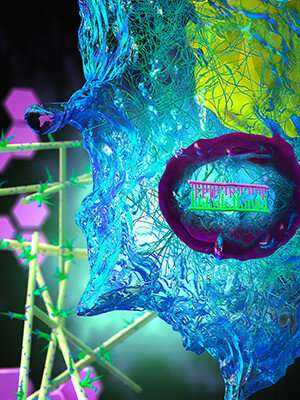Study: How cells and tissues maintain their shape

Scientists have long pondered how the body's tissues maintain their stiffness in the face of growth, injury, and other forces. In a new study, Yale researchers have described this mysterious process, which is key to healthy cell and tissue function.
To explore the topic, senior author Stefania Nicoli and her colleague Martin Schwarz first focused on human cells, specifically the fibroblast cells that control the rigidity of animal tissues. They found that, in addition to genes that positively regulate tissue stiffness, there is a network of tiny RNA that counteract that stiffness as well. These microRNA control proteins that are responsible for maintaining tissue contraction, adhesion, and structure. Together, these genes create a "mechanical homeostasis," or balance, that preserves tissue stability under stress.
The research team observed the same phenomenon in the cells of mice and zebrafish, showing that the mechanism is common to vertebrates and dates back millions of years.
The finding could provide insight into the development of fibrosis—the thickening and scarring of tissue that can lead to disease. "It may enable the interpretation of early fibrotic disease," which is a factor in conditions such as cancer and hypertension, said Nicoli. "If you catch the fibrotic process early enough, you may be able to reverse it."
The full paper is published in Nature Cell Biology.
More information: Albertomaria Moro et al. MicroRNA-dependent regulation of biomechanical genes establishes tissue stiffness homeostasis, Nature Cell Biology (2019). DOI: 10.1038/s41556-019-0272-y
Journal information: Nature Cell Biology
Provided by Yale University




















